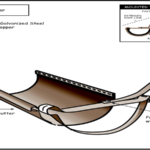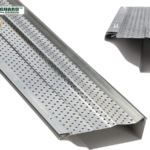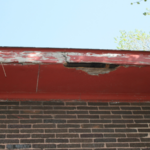Installing gutters is a home improvement project that you can usually do yourself, as long as you have the proper tools and safety equipment. It’s important to do your research before getting started, so that you know what kind of gutters will work best for your home and budget. You’ll also need to take measurements of your eaves and roofline, so that you can purchase the correct amount of materials.
Once you’ve gathered all of the necessary supplies, you can begin the installation process by attaching hangers to your fascia board using screws or nails. Then, you’ll need to cut the gutters to the correct length, using a saw. It’s important to use safety goggles and gloves when doing this.
After the gutters are cut to size, you can attach them to the hangers with brackets and screws. Make sure that the gutters are level, so that water can properly drain through them.
Once the gutters are installed, you can add end caps and downspouts. You may also want to add a gutter guard to keep leaves and debris from clogging up the gutters.
What is the rule of thumb for gutter installation?
There is no definitive answer to this question as it depends on a number of factors, such as the size and slope of your roof, the type of gutters you choose, and the climate in your area. However, as a general rule of thumb, it is generally recommended that you install gutters that are at least 4 inches wide.
How do you layout gutters?
There are a few things to keep in mind when you are planning to install gutters. First, you need to determine the size and type of gutter that you need. Second, you need to think about the location of the gutters. Third, you need to make sure that the gutters are properly installed. Fourth, you need to make sure that the gutters are properly maintained.
The size of the gutters will depend on the size of your home and the amount of rainfall that you typically receive. The type of gutter will also be determined by the size of your home and the amount of rainfall. There are two types of gutters: the seamless gutters and the sectional gutters. The seamless gutters are easier to install, but they are more expensive. The sectional gutters are less expensive, but they are more difficult to install.
The location of the gutters is also important. You need to make sure that the gutters are installed in the correct location so that they can properly drain the water away from your home. The gutters should be installed so that they are level and parallel to the ground. The gutters should also be installed so that they are not obstructed by any trees or shrubs.
What goes first gutter or drip edge?
If you’re installing a new gutter system on your home, you might be wondering whether the drip edge or the gutter should go first. The answer is that it depends on the type of gutter you’re using. If you’re using a sectional gutter, the drip edge should be installed first so that the gutter can be properly secured to it. However, if you’re using a seamless gutter, the gutter should be installed first and the drip edge can be installed afterwards.
What goes on first roofer or gutter?
A roofer should always be called first when there are issues with a roof as they will be able to assess the situation and determine if the gutters are the cause or if they are just symptomatic of a larger problem. If the roof is the cause of the issue, then the roofer will be able to repair or replace the roof as needed. If the gutters are the cause of the problem, then the roofer will be able to clean or repair the gutters as needed.
How much gap should be between gutter brackets?
There is no definitive answer to this question as it depends on a number of factors, such as the size and type of gutter, the pitch of the roof, the climate, and the amount of rainfall. However, most experts agree that the gap between gutter brackets should be no more than 3/8 of an inch. This ensures that the gutters can drain properly and prevents leaves and other debris from clogging the system.
What is the fall rule for gutters?
The fall rule for gutters is that they should slope down and away from your home at least half an inch for every 10 feet of gutter. This ensures that water will flow properly through the gutters and away from your home, preventing any potential damage from standing water.
How far apart should gutter installation screw be?
Gutter installation screws should be placed every two feet along the gutter. The first screw should be placed two feet from the end of the gutter, and the last screw should be placed two feet from the other end of the gutter.
What is proper gutter height?
There is no definitive answer to this question as the proper gutter height will vary depending on the specific circumstances of each individual home. However, a good rule of thumb is to make sure that your gutters are high enough to allow water to flow freely away from your home, but not so high that they become an eyesore or a hazard.
Final Word
If you’re considering gutter installation, be sure to do your research and choose a reputable contractor. It’s also important to be prepared for the project, and to know what to expect from start to finish. With a little planning and preparation, you can ensure that your gutter installation goes smoothly and that your gutters will provide years of protection for your home.
















